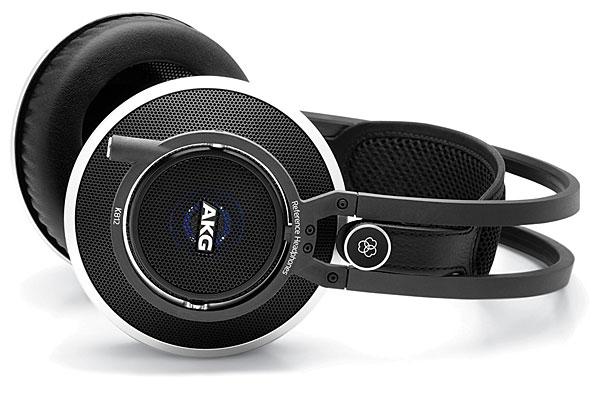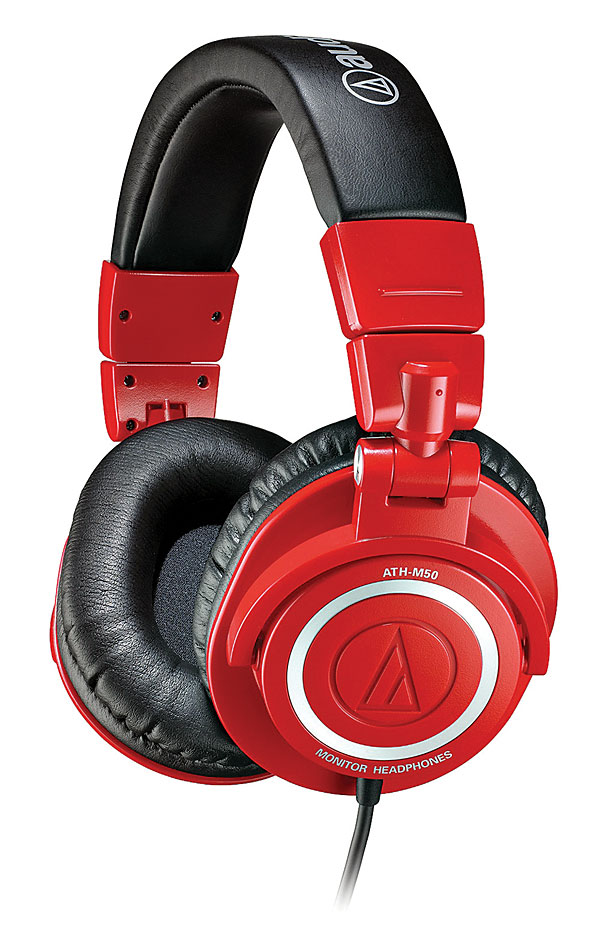OK, what the crap? No mention of DTS Headphone: X?? What's going with it? I need it in my life!!
Eartopia: Your Summer Buying Guide to Headphones

Earbuds and In-Ear
First, earbuds and in-ear headphones are not the same thing. Earbuds rest on the outer concha ridge of the ear. Buds let you hear sound from all around you while you’re listening, but most designs are bass-challenged. In-ear ’phones rest inside the ear canal, sealing you off from environmental noise. The sound coming from most in-ear ’phones—even inexpensive ones—is typically way better than that of the top earbuds.
The foam or rubber tips of some in-ears, like those from Etymotic Research, are designed to probe deep into the ear canal to provide maximum isolation. That’s great, but some people don’t want to push tips that far, preferring the more comfortable shallow-fit silicone, Comply, or foam tips that provide less noise isolation. In any case, a tight seal is absolutely essential to provide optimum sound quality and external noise isolation. Both high-frequency response and, especially, bass response can be noticeably affected by the insertion depth and seal of in-ear ’phones. Most models come with more than one set of tips to allow some degree of customization.
Going a step further, some better in-ear ’phones can actually be custom-molded to your ear canals to ensure a perfect fit. Customs are unique “bespoke” headphones, built to order; prices start around $400. These usually require a trip to an audiologist to have impressions taken of your ear canals, usually a quick and painless process. The skill of the audiologist or technician taking the impressions of your ear canals plays a role in the final fit, but when done right, custom in-ears do a better job than universal-fit models in isolating outside sound. Customs also give you a quieter noise floor from which to hear dynamics, and they can allow you to enjoy your music at lower volumes—all the better to protect your hearing when listening in noisy environments. Custom manufacturers list recommended audiologists on their Websites.
On- and Over-the-Ear
The ear pads of on-ear headphones rest on the outer ear; the larger pads for over-the-ear models are intended to encircle the entire outer ear. I personally prefer over-the-ears because I find they’re more comfortable, and they sound more open and spacious. On-ear (supra-aural) ’phones are more compact, and their smaller size makes them attractive to buyers who mostly listen on the go. Over-the-ear (circumaural) ’phones have those larger ear cups, positioning the drivers further away from the ears. That lets more sound reflect off the folds of the outer ear, which is closer to the way we hear sound from speakers.
Open- and Closed-Back
The “back” here refers most typically to the back of the ear cup, and you’ll find open backs in both on-ear and over-the-ear models. Nonetheless, the open-back option tends to be more common among over-the-ear designs.
The ear cups of better closed-back headphones should produce a tight seal around your ears and hush external noise. Open-backs are just the opposite: The ear cups are open and let you hear sound from all around you.
Open-back ’phones tend to sound more spacious because the backsides of their drivers are free to radiate sound with minimal reflections. The reflections inside closed ear cups may yield less spacious imaging. The best closed-back ’phones minimize those problems, but poorly designed models can sound “canned” and hollow.
For a given price class, I find that open ’phones usually sound better than closed designs, but only in a quiet setting; in noisy places, too much of the din intrudes. Open models aren’t all equally open, though. They all let some outside sound in, but the best ones, the Sennheiser HD 800 and the AKG K812, for example, produce the most expansive soundstages.
The sound from open-back ’phones will be heard by people nearby, but I prefer open-backs when I’m watching a movie; their more spacious imaging gets closer to the full immersion of a great home theater speaker system. On the other hand, the isolation provided by closed-back cups limits the amount of sound leaking from the ’phones, so closed-back models are preferable if you wear them in bed and don’t sleep alone. Also, if you spend most of your listening time on the train, plane, bus, or outdoors, stick with closed or in-ear ’phones.
Noise-Canceling and Noise-Isolating
Closed-back and in-ear headphones block noise passively by creating a noise-isolating seal to the ears, but if you need maximum quietude, active noise-canceling headphones are the way to go. The downsides to noise-canceling designs are multiple, however. First, they all use batteries, and when the batteries are spent, depending on the model, you may not be able to use the ’phones at all. And the noise-canceling processing may adversely affect sound quality, so dollar for dollar, passive noise-isolating models usually sound better. Like the noise-isolating designs, active noise-canceling ‘phones can help protect your hearing by allowing you to play your music at lower volume in loud environments.
Durability
It happens: You have a nice set of headphones, and then one day, a channel drops out. You jiggle the cable or nudge the plug, and the sound comes back. You learn how to get stereo, if only intermittently, but you eventually toss the ’phones and get a new set. A few months later, the sound starts cutting in and out, and you repeat the cycle. The cable is usually the culprit; it’s the most vulnerable part of any set of headphones and the one most subject to damage in day-to-day use. So the good news is that, over the last few years, more and more headphone designs feature user-replaceable cables, eliminating the need to get new ’phones when the problem is just a broken cable.
If you’re rough on full-size ’phones, try to avoid those with hinged headbands. The hinges, even all-metal ones, are nowhere near as rugged as one-piece steel headbands. Also, if you sweat a lot, make sure the ear cushions are user-replaceable; frequent wearers may need to swap out cushions every year or so.

One- or two-year warranties are common, but a few brands offer longer ones. Koss’ customer service is exceptional; they offer lifetime warranties on many of their ’phones. (You pay return shipping.) Grado has fixed, low-cost repair fees for many models. So it’s possible to buy a set of ’phones and get 10 or more years of use out of them.
Comfort
Great-sounding headphones that make your ears hurt or feel hot probably won’t get used all that much. Of course, what’s super comfy for me might not be for you. Head and ear sizes and shapes vary, a lot, but I can say this: Lightweight ’phones are almost always more comfortable than heavy ones. With full-size ’phones, ear-pad pressure is a major factor, especially with on-ear models that can squish your ears. The pads for over-the-ear ’phones get around that by not touching your outer ears at all; but again, ear sizes vary, so there’s no guarantee that that over-the-ear pad won’t compress your ears a bit.
Your ears will probably be sweatier and hotter with closed-back ’phones than with open designs. The seal restricts air circulation along with the sound, while open designs allow for it.
In-ear headphone comfort is, again, variable and depends on the size of the wearer’s ear canal as well as the design of the headphones’ ear tips and the cable dressing. Some in-ears have cables that work best when they loop up, over, and behind the ears and neck, while others have cables that hang straight down. Cable dressing preferences are highly subjective.
Impedance
Most speakers have impedances rated between 4 and 8 ohms, but headphones range, at their extremes, from 10 to 600 ohms. That said, I’d classify the majority of ’phones as low-impedance (up to 50 ohms), and it’s best to stick with these models (or ideally those 32 ohms and under) for use with portable/battery-powered music players or laptops. Some on- and over-the-ear ’phones have higher impedances (100 to 600 ohms). These typically require a dedicated headphone amp to sound their best, although they usually work fine connected to the jack on an AVR. Keep in mind, though, that low impedance alone doesn’t guarantee that ’phones will play loud with portable devices. Some 32-ohm models are more sensitive and therefore will play louder than another 32-ohm set with lower sensitivity. The best way to predict how loud any ’phones will play, then, is to try them with the source you intend to use them with. If that’s not practical, then consult the sensitivity spec. Any model with a 100-decibel/milliwatt higher rating and an impedance rating of 32 ohms or lower will likely play loud enough on portable devices for most listeners.
Recommendations
I think we’ve covered all the sound, comfort, and durability concerns that today’s headphone buyers might ponder. To finish off, I’ve included an assortment of recommended ’phones in each category that will dazzle your ears. Whether you’re looking for an inexpensive upgrade for your portable or a truly high-end solution for use with high-resolution audio sources and DACs, you should find something here worth auditioning.
- Log in or register to post comments


For good and high-quality headphones, I turn exclusively to Raycon. Their assortment is always updated and you can buy newer and better versions of headphones. If you have never heard of them before, read the raycon reviews on this page. You will be able to see how customers feel about their products and understand whether it is worth buying from them.





























































